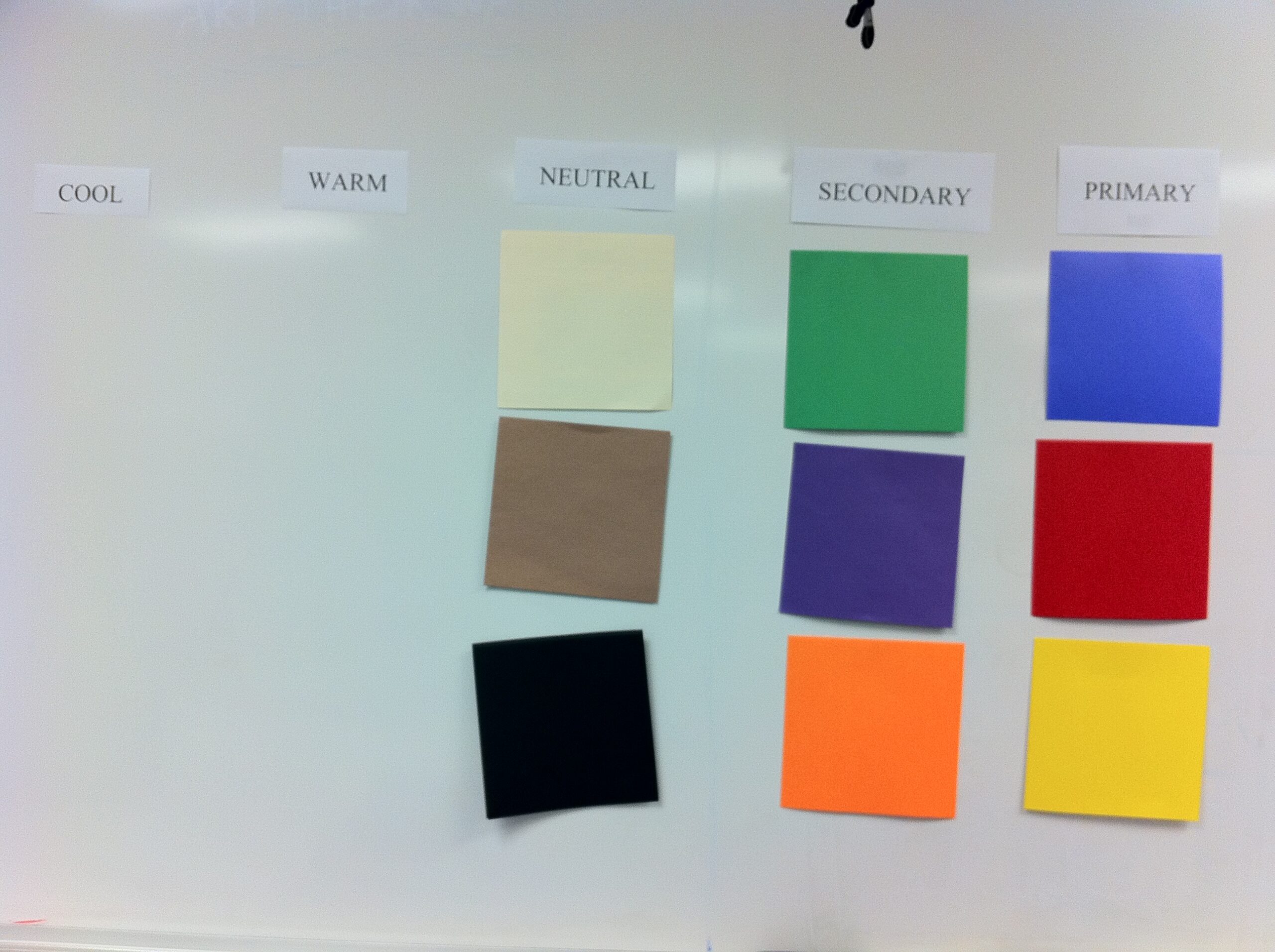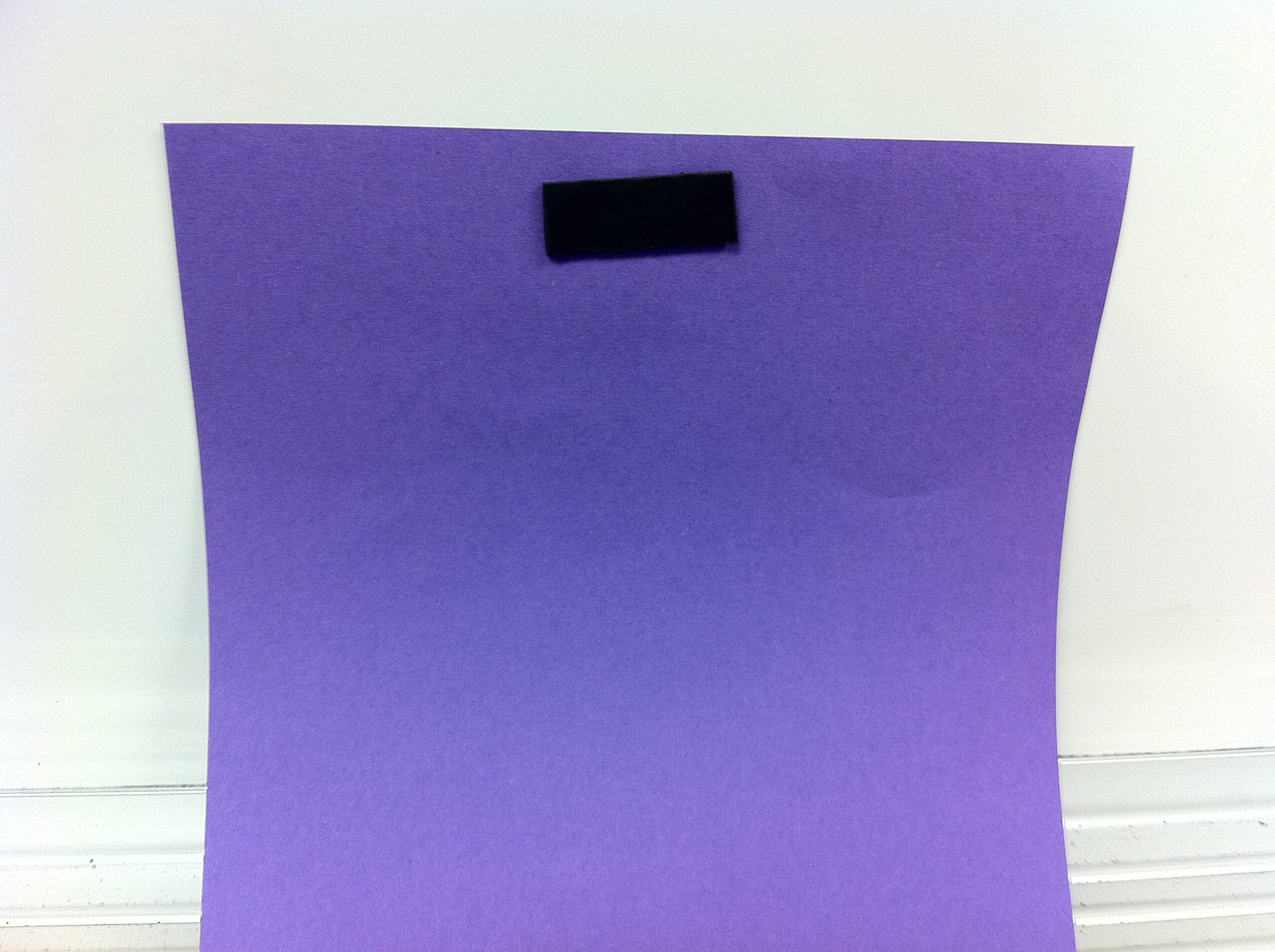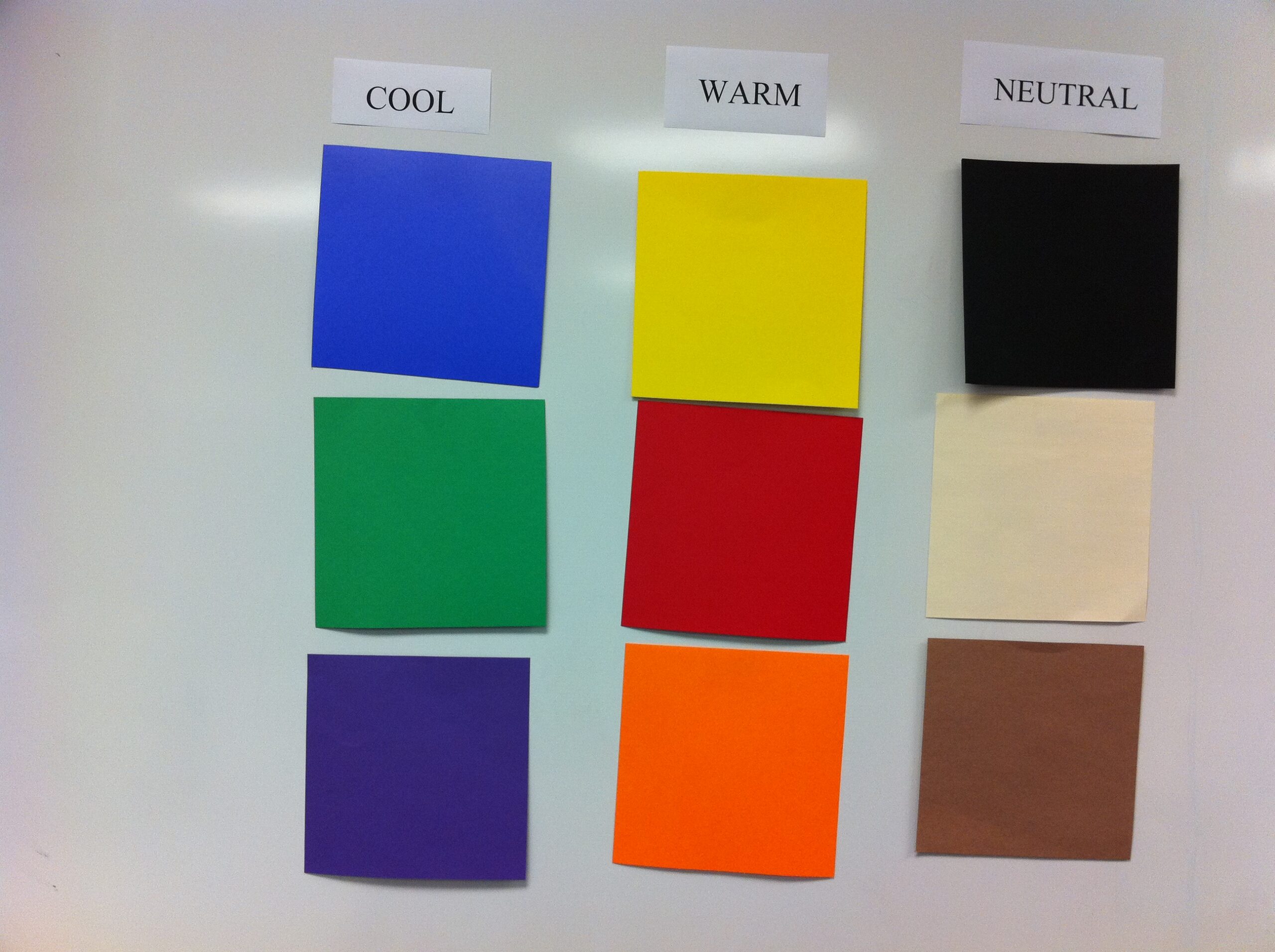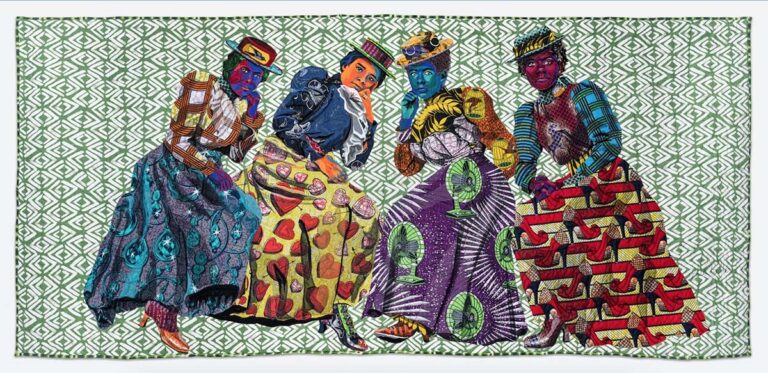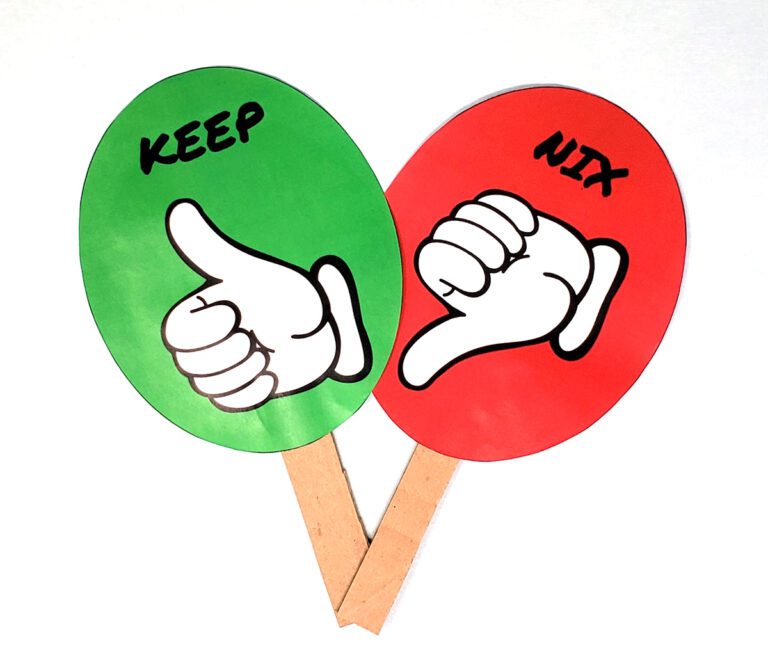I made up a new game for my students this week! It’s called a “Color Sort.” This month, many of the Power Standards are based on the Art Element of Color. Therefore, I needed a creative way to review the color families. On day 1, I decided to show my Color PowerPoint. Can you hear the kids snoring? Even a PowerPoint seems boring to my students sometimes because I use them so much. Plus, a color wheel is just a boring wheel, how much more exciting can you make it?
Enter the “Color Sort” Game
My whiteboard looked like this. I posted terms at the top and cut squares representing all of the colors.
The squares have sticky magnets on the back so we can move them.
The picture below is how the “Color Sort” looked when the kids walked into class. All of the colors were pushed to the side. We had to solve the puzzle!
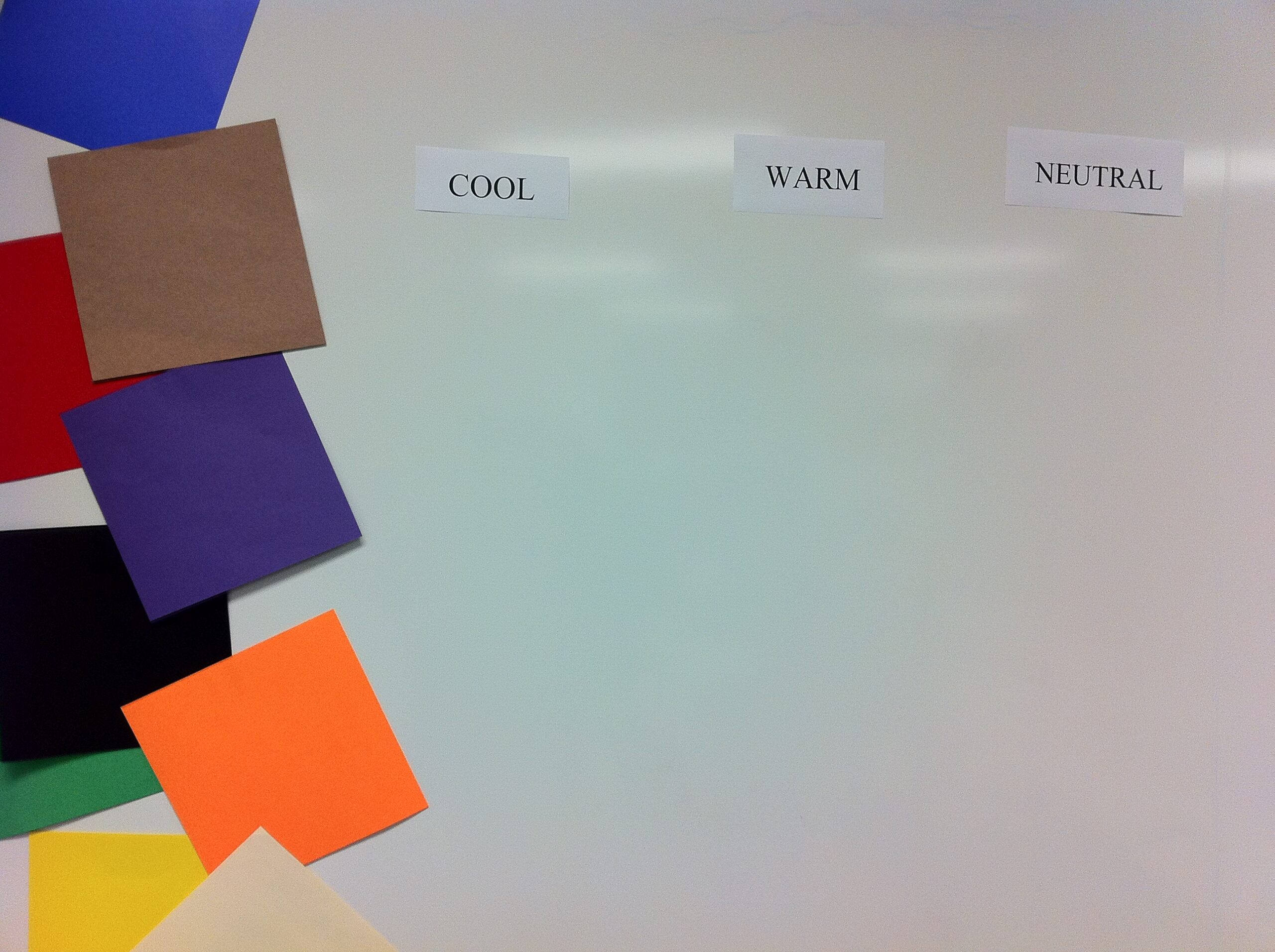 So, I called up students one by one, and each got to place a color under the category they thought it belonged. The room was silent. We sorted the colors into warm, cool, and neutral groups.
So, I called up students one by one, and each got to place a color under the category they thought it belonged. The room was silent. We sorted the colors into warm, cool, and neutral groups.
Then, we sorted the colors into primary and secondary groups.
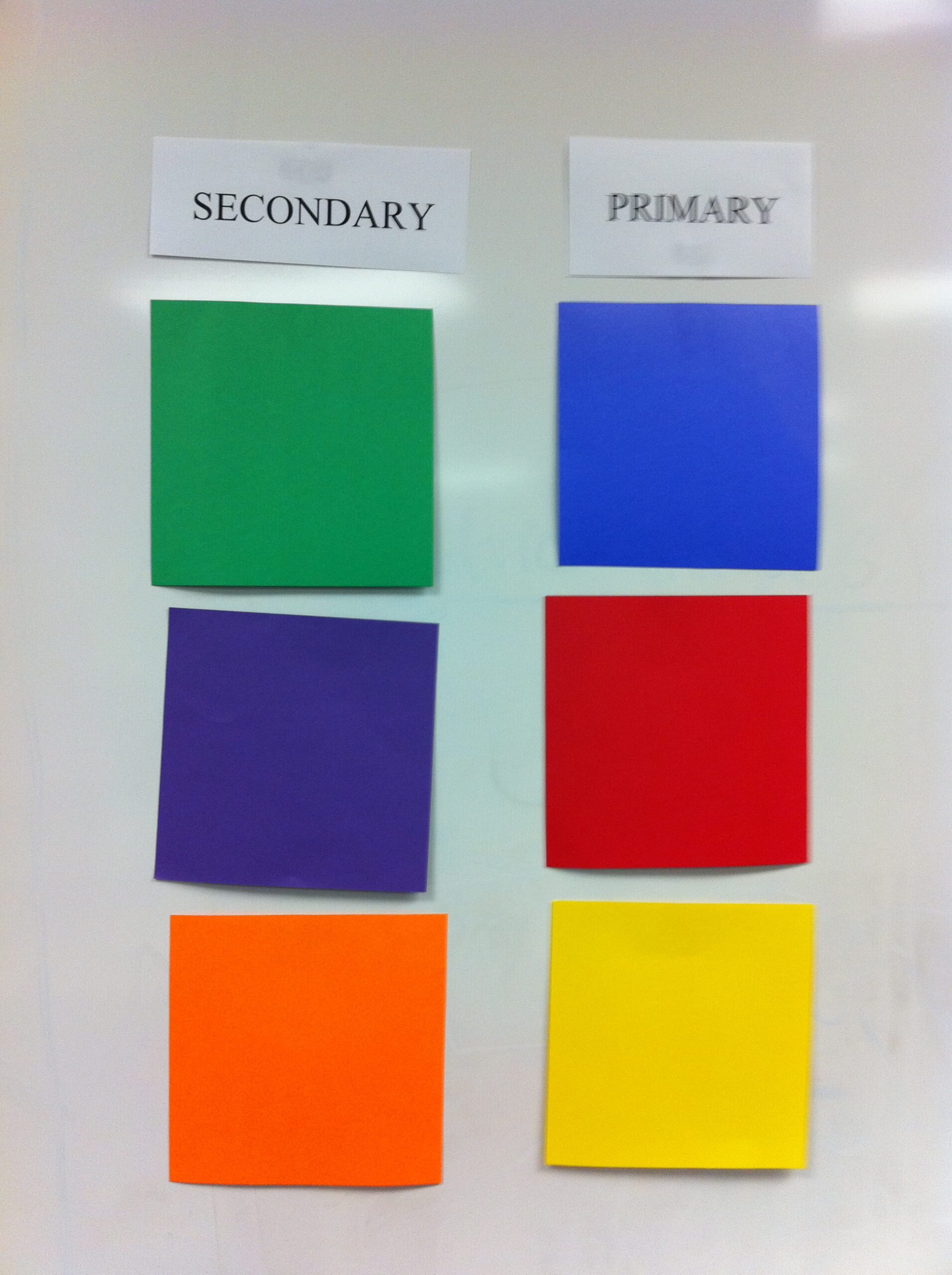 The kids did a really good job. I had the kids watching put their thumbs up if they agreed on the color placement and down if they disagreed. It was a great way to ensure all students were engaged and give me some formative feedback on who still wasn’t getting it. I used it with 2nd, 3rd, and 4th-graders, and it was a hit with them all.
The kids did a really good job. I had the kids watching put their thumbs up if they agreed on the color placement and down if they disagreed. It was a great way to ensure all students were engaged and give me some formative feedback on who still wasn’t getting it. I used it with 2nd, 3rd, and 4th-graders, and it was a hit with them all.
I realize that if I had an interactive whiteboard, I could do something like this on it. But, for me, this solution worked great. I want to enhance this idea by making even more sorting games with concepts and words. I find linking the visual image to the word connects things for students who learn in different ways.
What are other ways you review vocabulary or the art elements with your students?
Magazine articles and podcasts are opinions of professional education contributors and do not necessarily represent the position of the Art of Education University (AOEU) or its academic offerings. Contributors use terms in the way they are most often talked about in the scope of their educational experiences.
